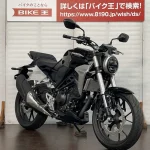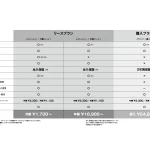The Mobile Suit Gundam series has such a long history that it can be called the nation's most popular robot anime. It features support mecha that can be combined or replaced to enhance the appeal of the mobile suits, such as the G Fighter in First Gundam and the various striker packs in Gundam SEED. Those who are fascinated by such gimmicks will be drawn to the attention of a three-wheeled EV with two wheels in the front and one in the back, which is currently in development for sale.
The upper and lower units can be combined to provide a variety of mobility options.
That is ROIDZ TECH's "Raptor" that we will introduce this time. Its eye-catching sci-fi style means it wouldn't be out of place as the next Kamen Rider or Sentai machine, but that's not the only innovative thing about it.
The biggest twist is that the design unit on top of the motorcycle and the base unit on the bottom can be separated with a single touch, and there will be multiple units of each. This means that depending on how you combine the upper and lower units, you can transform them into mobility with completely different styles and characteristics.
What's even more surprising is that ROIDZ TECH is making the specifications of the design unit public, allowing not only manufacturers but also individual creators and builders to design and develop it. If it becomes more widespread, individuals will be able to enjoy assembling their own Raptor, just like Gundam plastic models. You can feel their enthusiasm for creating a new platform for mobility.
Currently, ROIDZ TECH has released four design units and two base unit designs. In particular, the four-legged robot design unit, as typified by Boston Dynamics' Spot, transforms and "combines" with the base unit to improve running performance, making the dream of robot anime a reality.
Also interesting is the design proposal based on the assumption that it will be used as an automated delivery robot, which has begun to be put into practical use in some regions. Perhaps because autonomous driving is also in the picture, the design unit is a complete box, and perhaps to increase the stability of the contents, the base unit is a trike type with one front wheel and two rear wheels.
Unique lean mechanism second only to Yamaha's LMW
Currently, only a three-wheeled model with a maximum speed of 40km/h is being produced for sale. The three-wheel base unit mechanism with two front wheels and one rear wheel used in this motorcycle is also unique. Like Yamaha's LMWs such as the Tricity and NIKEN, the Raptor also leans due to steering and weight shifting, so it is also a proper motorcycle. However, unlike the Yamaha's, this one has a unique mechanism called a variable differential lean damper.
Roughly speaking, the links connected to the left and right swingarms move back and forth by the movement of the handlebars, creating a difference in the inner wheel rotation of the left and right tires, causing the vehicle to tilt. Although the left and right swingarms are not connected by an axle shaft, the mechanism is similar to the hub-center steering that Bimota has traditionally adopted.
However, perhaps because the mechanisms that control the left and right wheels are independent, the maximum bank angle is 30°. Considering that Yamaha's LMW has a bank angle of 38° to 45°, this is a bit shallow. It can be said that the motorcycle is primarily designed as a city commuter motorcycle for low-speed riding.
That said, the variable differential lean damper also has a feature that LMWs don't have. That is, the bank angle, the force required to bank, and the banking speed can all be set. The bank angle can even be set to 0°, meaning it's almost fixed, making it suitable for a trike-like riding style. It seems to be an attempt to meet a wide range of user needs.
A three-wheeled motorcycle that can be ridden with a car license
We're excited to see what the Raptor will be like in the future, with the first model, a three-wheeled motorcycle, currently in development for sale in 2024. The planned price is said to be around the same as a mid-class motorcycle, so it's undeniable that it's a bit expensive when considered as a moped. Opinions are likely to be divided depending on whether you find the combination and interchangeability gimmick and future potential romantic.
Still, something is appealing about the desire to build a new EV platform that allows individuals to utilize their sensibilities. We'll be keeping an eye on ROIZ TECH's future efforts.
ROIZ TECH Raptor Specifications
- Overall length/Overall Width/Overall Height (Design Unit + Base Unit): 1,190 [mm]/510 [mm]/880 [mm]
- Over-all Length/Overall Width/Overall Height (Base Unit): 1,150 [mm]/510 [mm]/440 [mm]Wheelbase 850 [mm] Tread 430 [mm] Lean angle 0~30 [deg]
- Curb Weight: 54 [kg]
- Total Weight: 15 design units.7 [kg]/Base Unit 38.3 [kg] Including battery
- Cruising Speed: 0~40 [km/indecent] (Speed limit can be set)
- Cruising Range: 40 km [km/indecent] (Battery capacity/ Depends on load conditions)
- Battery Voltage: 48V
- Charging Time~7 hours (Battery Capacity, Charger Dependent)









